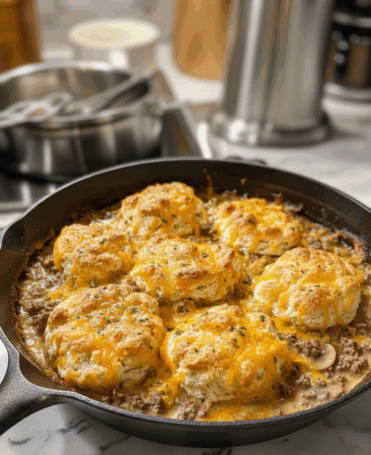One of the biggest challenges when planning an event—whether it’s an elegant wedding, a corporate cocktail reception, or an intimate birthday party—is answering the question that keeps every host up at night: how much food do I actually need?
Running short is a mistake no one wants to make, but ordering too much results in unnecessary waste of both budget and food. The key lies in applying a simple formula that combines the type of event with standard quantities per person.
In this post, we’ll break down the essential guidelines for calculating portions, adjusting the weight of ingredients to suit the dynamics of your celebration, from appetizers to dessert.
1. The 3 Crucial Factors Before You Grab the Calculator
Not all events are created equal. Before you start multiplying servings, consider these three pillars that will significantly adjust your calculations:
Factor Consumption Considerations Event Type & Time A formal luncheon generally consumes more protein and sides than a late-night dinner. A standing cocktail reception (or dînatoire) requires more bites than a cocktail hour preceding a seated dinner. Duration For long events (over 4 hours), especially those with an open bar, the consumption of drinks and finger food increases as guests spend more time mingling. Guest Profile Are there many children (smaller portions)? Is the group mostly young adults (larger appetites)? Are there specific dietary requirements (vegetarian, vegan, gluten-free)?
2. The Golden Rule for Buffet and Cocktail Service
The buffet format is the trickiest to calculate because guests serve themselves. To avoid panic, focus on the total number of pieces or the total weight you need to provide.
A. For Cocktails and Appetizers (Finger Food)
This is crucial if appetizers are replacing a main meal (e.g., an evening cocktail party).
Service Type Savory Pieces Per Person Sweet Pieces Per Person Light Cocktail (Preceding a meal) 4 to 6 pieces 1 to 2 pieces Substantial Cocktail (Replaces a meal) 8 to 12 pieces 2 to 3 pieces
PRO Tip: Offer high variety (5 to 8 different types of bites). This satisfies guest curiosity and helps distribute the quantities more evenly.
B. For Main Courses in a Buffet Setting
Example: For a buffet of 50 people featuring both chicken and beef, you do NOT need 7 oz of chicken and 7 oz of beef per person. You can slightly reduce individual servings, for example, to 3.5 oz of each, and still have enough total quantity for everyone.
3. Dessert Table and Drinks: The Extras That Make a Difference
These are the areas where it is better to over-order slightly.
Desserts and Celebration Cake
If you have a main celebration cake (wedding or birthday), assume every person will want a slice.
- Celebration Cake: 3.5 ounces (100 grams) per person.
- Individual Desserts / Sweet Buffet: 1.5 to 2.5 small items (mini brownies, mousse shots, macarons) per person, in addition to the main cake.
Beverages: The Litre Formula
For an event lasting 3–4 hours, consumption averages:
Beverage Type Estimated Quantity Per Person (Total Event) Bottled Water 1 Litre (It’s the most consumed item, especially in warm weather). Sodas/Juices 500 ml. Wine (Red, White, or Rosé) 1/2 bottle per person (375 ml). Beer 2 to 3 bottles (12 oz) or cans. Sparkling Wine/Champagne (Only for toast) 1 glass per person (150 ml).
If you are serving food stations (pasta, rice, meat, sides), calculate quantities by total weight, assuming each guest will take a portion of everything they like best:
Food Category Standard Weight Per Person (Net) Protein (Meat, Fish, or Poultry) 6.5 to 7.5 ounces (180 to 220 grams) Starches (Potatoes, Rice, Pasta) 5.3 to 6.3 ounces (150 to 180 grams) Salads (As a side dish) 3 to 3.5 ounces (80 to 100 grams) Bread/Rolls 1 to 2 small units or 1.8 to 2.6 ounces (50-75 grams)
IMPORTANT: Always have 10–15% extra water and ice. A hot event or one with a lot of dancing will dramatically increase liquid consumption.
Adjustment Checklist (Safety Margin)
To finish and ensure your event is a culinary success, apply the 10% Safety Margin.
- Round Up: If your calculations suggest 45 servings, prepare 50.
- Don’t Over-Multiply: If you offer 6 different main courses on the buffet, people will take less of each. Do NOT multiply 7 oz by 6! Focus on the total weight of protein and sides.
- Pace Yourself: If you are serving food in stations or buffet trays, don’t put all the food out at once. Replenishing is part of the strategy to ensure everything looks fresh and appetizing, and to minimize waste.
- Prioritize Variety: Make sure the most popular options (like the primary meat or the main vegetarian dish) have the largest safety margin.
With these guides in hand, your next event will be perfectly catered, allowing you to enjoy the celebration knowing that every guest will leave satisfied… and that you won’t be left with a massive surplus of leftovers!




